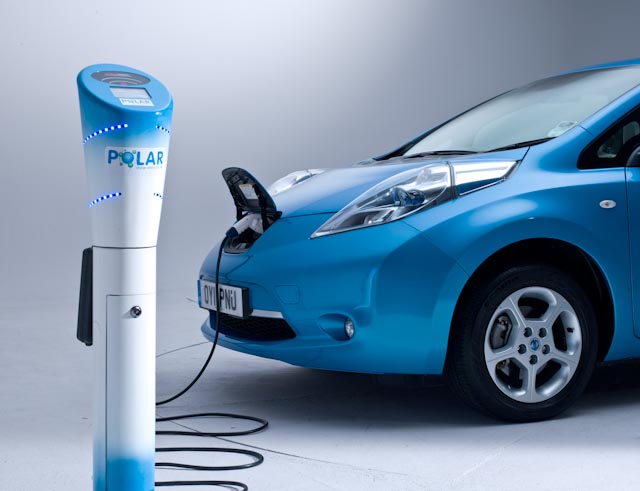We love data, and articles that analyze data.
We love them a little less when their opening lines sneer at sites like this one by calling them the "sunshine, lollipops and rainbows electric car press."
Still, there are far more interesting problems with a recent analysis on Seeking Alpha entitled "Electric Cars--Still Crazy After Five More Years."
Author John Peterson's premise is that, despite a Pike Research report that projected electric-car battery costs would fall to $520 per kilowatt-hour by 2017, electric cars still won't offer a payback in fuel-cost savings even five years hence.
Or as Peterson puts it, "...electric drive will remain hopelessly uneconomic because small batteries are beautiful when it comes to transportation economics but large batteries are aggressively ugly."
He then proceeds to quote Toyota's Bill Reinert, known throughout the industry for his frequently expressed belief that plug-ins with any battery size above about 5 kilowatt-hours make no sense.
Where we think Peterson misses the forest for the trees is his assumption that the only reason to buy a plug-in car is to save money.
It's not about payback
At prices of $28,000 and up (before incentives), plug-in cars are emphatically not the cheapest ride for most buyers today when all costs are included. (There are exceptions, we should note, but not all that many.)
Instead, the early buyers of plug-in cars fall into some relatively specific groups: early adopters, electric-drive fans, uber-greens, energy-security hawks, and finally the "cheap bastards," who carefully project lifetime costs for their cars and plan to keep them long enough where they will see a payback on a plug-in car.
Only one of those groups has cost savings as the purchase motivator. The others buy for completely different reasons--and, together, those groups will likely buy the first three to five years' worth of electric cars (along with large corporate and government fleets).
In due course, as battery costs come down 6 to 8 percent a year and plug-in sales slowly rise, early adopters will be overtaken by mass market buyers.
Some think that happens in 2016 (especially Nissan CEO Carlos Ghosn), while others say 2020 is more likely. Gasoline prices will play a role in the slope that curve too, as will higher costs for gasoline cars to meet increasingly stringent fuel economy rules.
Age-old argument
In fact, this small-battery vs. large-battery argument has raged for years in the electric-car world.

Polar Charging Post and Nissan Leaf
On the one hand are the minimalists, who say that you can get most of the savings of a battery electric car if you add a smallish plug-in pack (4 or 5 kilowatt-hours) to an existing hybrid car.
This is the approach taken by the 2012 Toyota Prius Plug-In--the car Reinert would tout as the only sensible solution--along with plug-in versions of the upcoming 2013 Ford C-Max and Ford Fusion. Those cars have electric ranges of 6 to 15 miles, under limited circumstances.
On the other hand are the zero-emission crowd, who point out that most people's driving falls within the 70-to-100-mile range of a modern battery electric car--which emits nothing and consumes no gasoline.
Investment advice
Peterson is primarily giving investment advice--he's bearish on lithium-ion cell makers, including the struggling A123 Systems [NSDQ:AONE], along with Tesla Motors [NSDQ:TSLA]--rather than advising car buyers.
But despite the quote from Toyota's Reinert, we note that Peterson completely neglects to include the Prius Plug-In Hybrid in his numerically dense analysis.
Instead, he jumps directly from the conventional Prius (1.3-kWh pack) to the Chevrolet Volt (16-kWh pack), ignoring the Prius Plug-In with its 4.2-kWh pack.
Instead, how many buyers?
It's a bit hard for us to take an analysis like his seriously when a major product and the underlying buyer motivations are missing. He's right on the numbers, but...trees, meet forest.
We'd rather have seen from Peterson a decent look (based on data) at how large those various early-adopter cohorts may be, and what that says about the size of the plug-in car market in its early years.
If you know of information like that, please add it to the Comments below.
+++++++++++













